
Top 10 AI Tools for Researchers in 2025
AI tools are transforming research in 2025 by tackling common challenges like writing, managing citations, and analyzing data. Here’s a quick overview of the top tools:
- Yomu AI: Helps with academic writing, citation management, and quality checks like plagiarism detection.
- Zotero AI: Simplifies reference management with real-time updates and smart citation suggestions.
- EndNote AI: Offers advanced bibliography customization, citation verification, and journal recommendations.
- GrammarlyGO: Enhances academic writing with clarity, tone adjustments, and citation style checks.
- Scite Assistant: Analyzes citation context and maps research connections.
- Iris.ai: Summarizes complex texts and integrates domain-specific knowledge.
- DeepL Write: Refines writing with translation, terminology management, and collaboration features.
- Scholarcy: Creates summaries and visual maps for faster literature reviews.
- Quetext AI: Provides plagiarism detection and citation checks.
- DataRobot for Researchers: Automates data modeling and machine learning.
These tools save time, improve productivity, and ensure quality in academic research. Whether you're drafting, citing, or analyzing, these AI solutions can streamline your workflow.
AI Tools Academics SWEAR By (and the Ones to AVOID!)
1. Yomu AI

Yomu AI reshapes academic writing with its smart Document Assistant and AI-powered autocomplete, helping writers stay productive while maintaining strict academic standards.
- Smart Drafting: Offers real-time guidance on paper structure and provides context-aware autocomplete to keep your writing flowing.
- Citation & Visuals Management: Handles citation management seamlessly and auto-formats figures and tables with italicized captions.
- Quality Assurance: Features tools like plagiarism detection, grammar checks, reference formatting, paraphrasing, and summarization.
Researchers appreciate Yomu AI's streamlined interface and lightweight design, which ensures faster performance. Updates in 2025 focused on improving user interaction and refining text-enhancement tools, solidifying its place in academic research.
Up next, Zotero AI simplifies reference management to keep your research organized.
2. Zotero AI
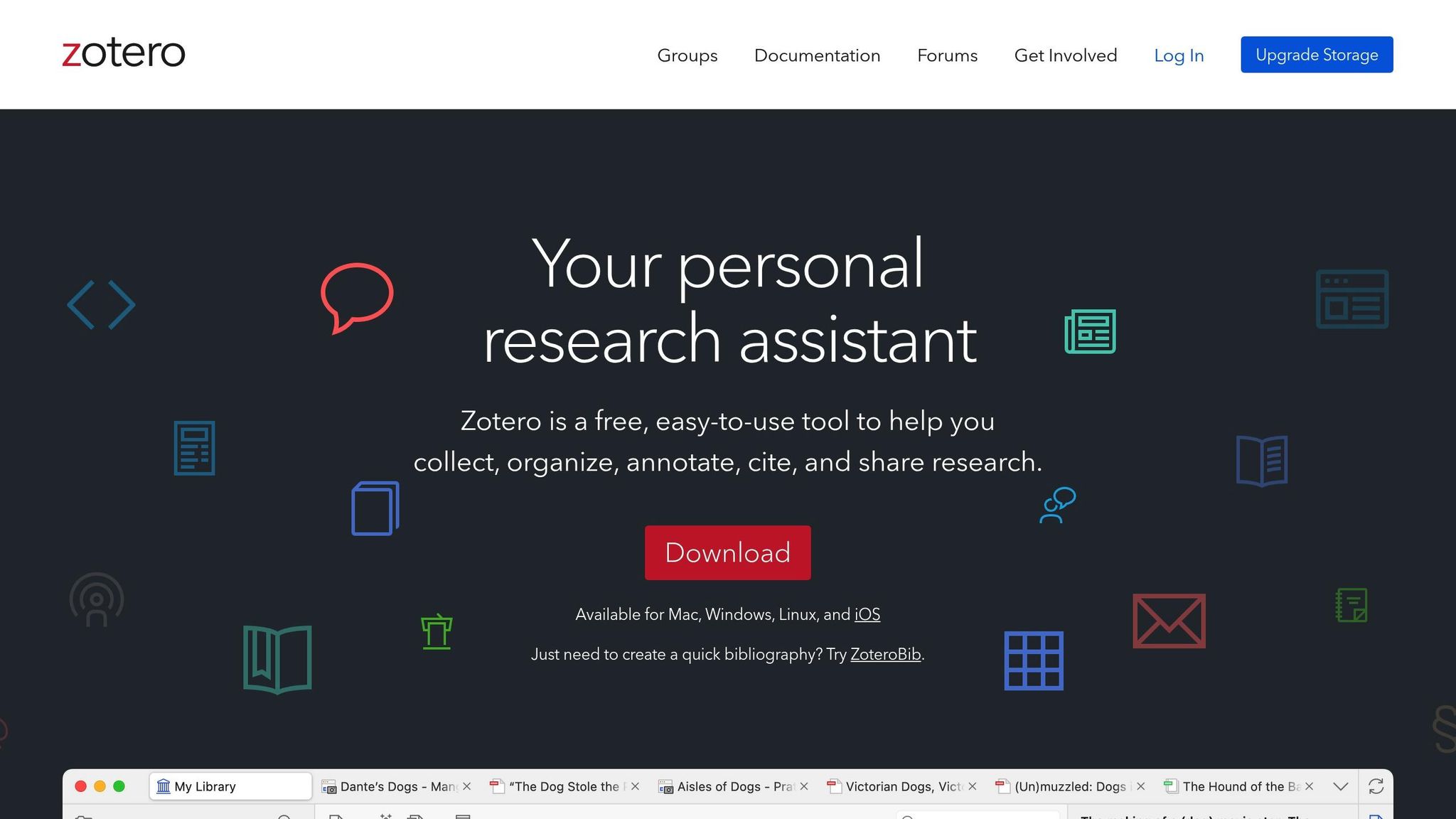
Zotero AI simplifies reference management, making it easier for researchers to gather and organize academic sources. Here's what it offers:
- Smart citation suggestions tailored to your manuscript's context.
- Automatic PDF metadata extraction, ensuring your files are well-organized.
- Collaborative research libraries that update in real-time for team projects.
- Quick annotated reading list summaries with just one click.
Up next, EndNote AI takes bibliography management to the next level with advanced customization options.
3. EndNote AI
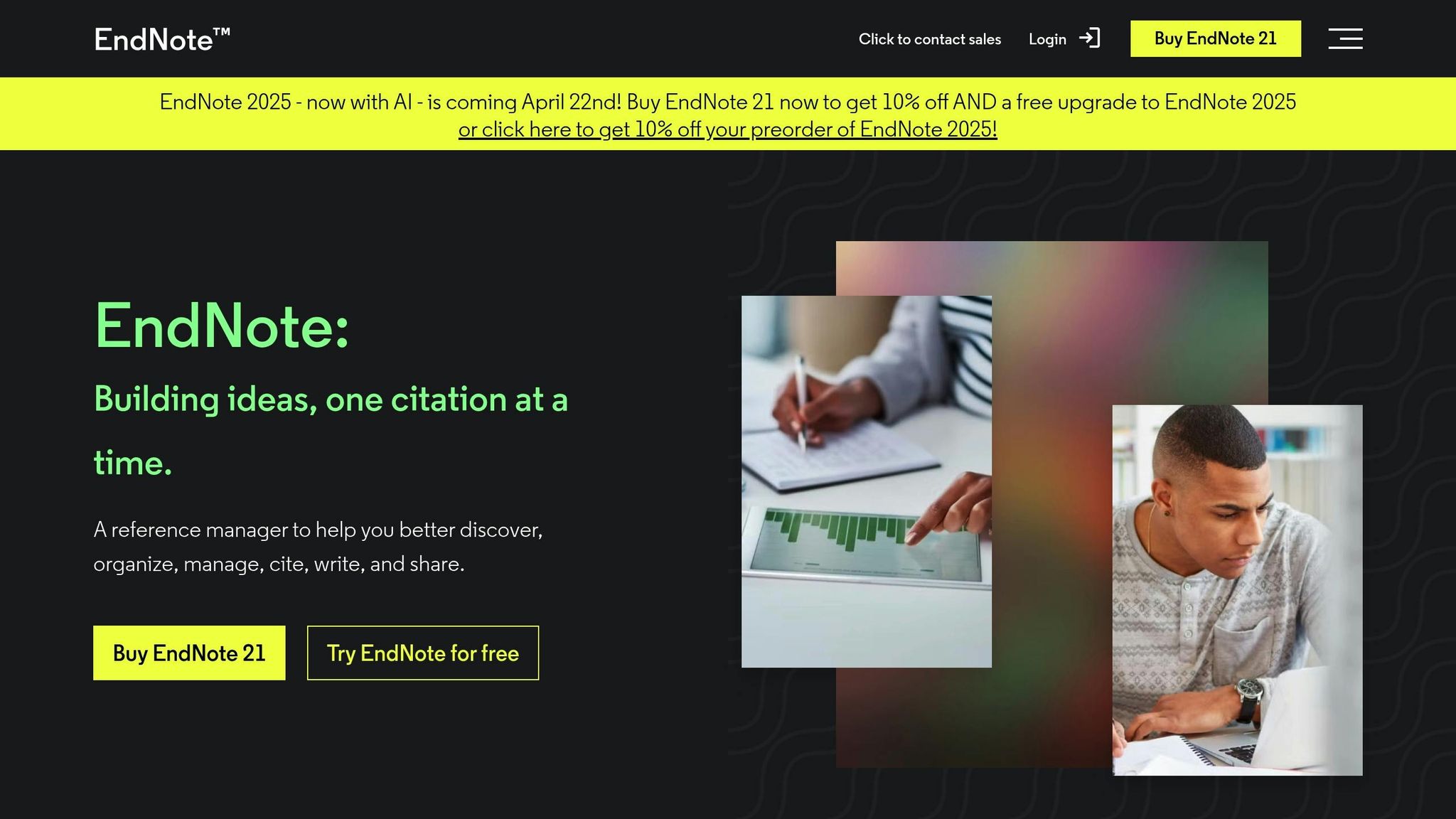
EndNote AI takes bibliography management to the next level with tools designed for precision and customization, building on the collaborative features offered by Zotero AI.
Here’s how EndNote AI improves reference management:
- Smart Style Engine: Automatically formats citations and bibliographies in over 7,000 styles. It updates your reference lists instantly as you write, saving you time and effort.
- AI Reference Verification: Uses machine learning to cross-check in-text citations against your library, identifying mismatches and suggesting fixes.
- Research Templates: Provides manuscript templates tailored to specific disciplines, complete with pre-formatted sections and citation patterns based on leading journals.
Other features help streamline your research process:
- Version Control: Keeps track of citation changes and ensures consistency across different versions of your documents.
- Custom Rules Engine: Lets you set up personalized citation rules that automatically apply to all your projects.
- Journal Finder: Recommends journals that align with your research topic and citations.
EndNote AI integrates smoothly with popular word processors, making bibliography management easier while maintaining academic integrity and standards [3].
Once your references are in perfect order with EndNote AI, you can use GrammarlyGO to refine your writing.
4. GrammarlyGO
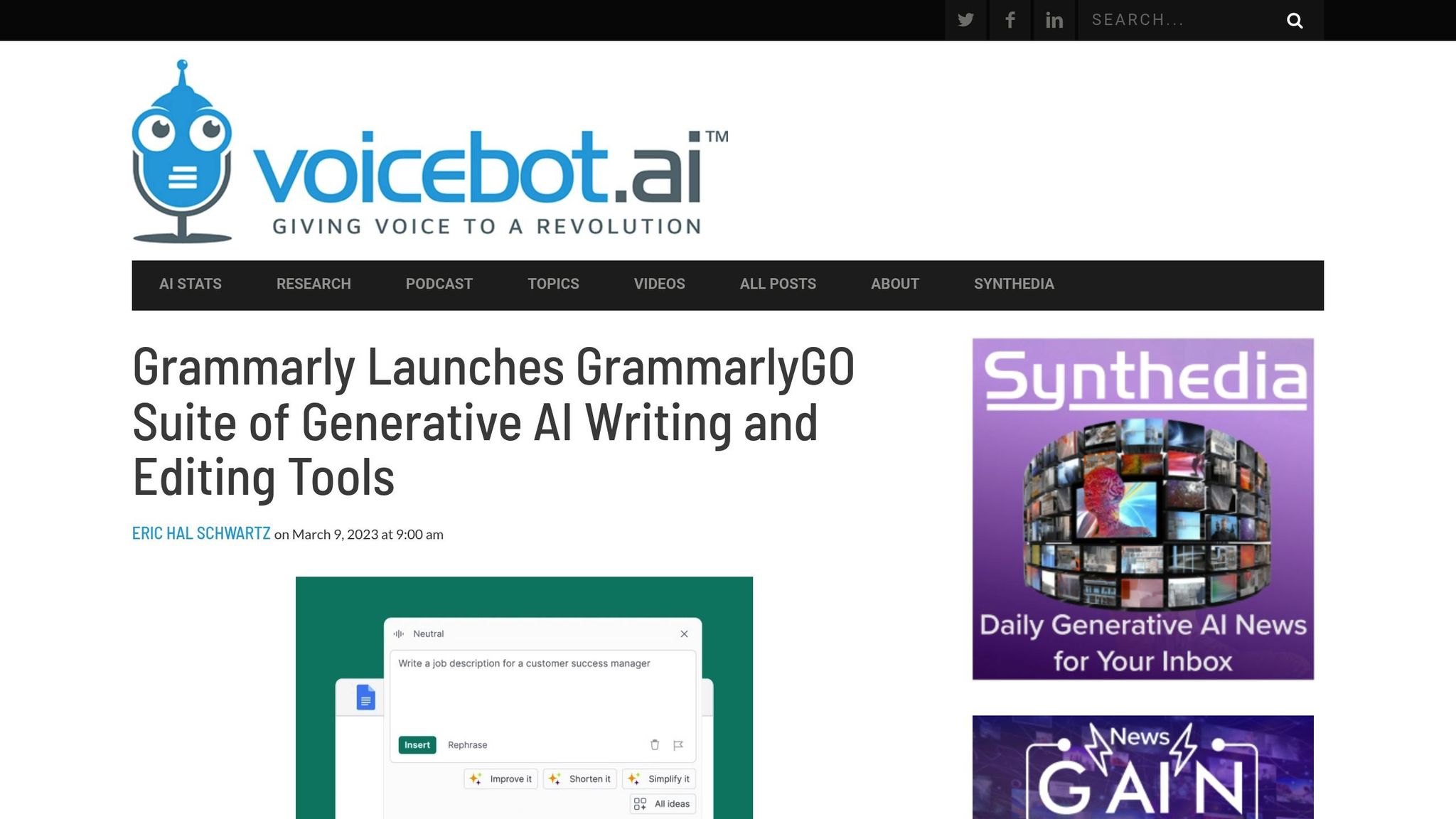
Once you've polished your references with EndNote AI, GrammarlyGO steps in to fine-tune your manuscript's readability and tone. This AI-powered tool is designed to enhance clarity, maintain an academic voice, and ensure your work aligns with required style guidelines.
GrammarlyGO brings a fresh approach to academic writing by combining advanced AI capabilities with a focus on scholarly standards. Here’s what it offers:
- Academic Style Consistency: Keeps your writing formal and aligned with academic norms.
- Field-Specific Suggestions: Tailors recommendations based on your area of research.
- Citation Style Checks: Ensures your references are formatted consistently.
- Clarity Improvements in Real Time: Simplifies overly complex sentences for better readability.
- Precise Word Choices: Recommends more accurate academic vocabulary.
- Platform Integration: Compatible with major research tools for a smoother workflow.
Next, Scite Assistant takes your citation analysis to the next level, helping you build a stronger literature review.
5. Scite Assistant
After polishing your manuscript with GrammarlyGO, Scite Assistant can help you dive deeper into your citation analysis. While tools like EndNote AI and GrammarlyGO focus on citation accuracy and formatting, Scite Assistant goes a step further by analyzing how each reference contributes to your work.
Scite Assistant speeds up literature reviews by offering real-time citation context and evidence-based insights. Here's what it brings to the table:
- Citation Context Analysis: Identifies whether a citation supports, contradicts, or simply mentions your findings.
- Smart Evidence Tracking: Gathers key data points from multiple papers for easy synthesis.
- Automated Reference Linking: Adds citation links and summaries directly into your manuscript.
- Reference Manager Integration: Works seamlessly with Zotero and EndNote for smooth workflows.
- Citation Network Mapping: Visualizes research connections and helps spot new trends.
- Smart Recommendations: Suggests relevant papers based on your citation habits.
Next, discover how Iris.ai uses AI to reshape research mapping with topic modeling.
sbb-itb-1831901
6. Iris.ai
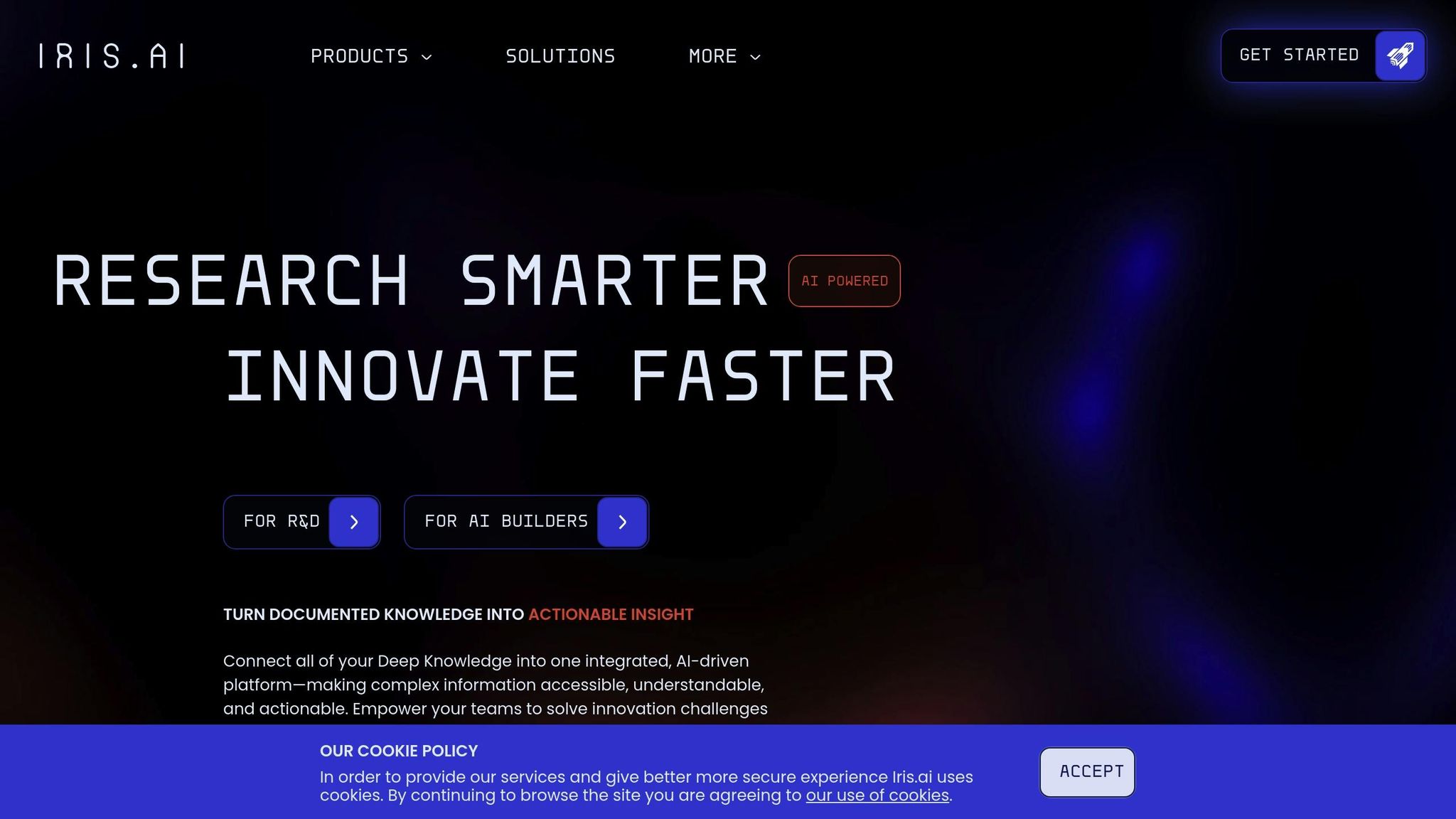
Iris.ai goes beyond basic citation analysis by using over 10 years of advancements in AI, NLP, and LLMs to simplify complex research texts into actionable insights. Its self-contained tech stack ensures top-notch security and privacy, making it a reliable choice for handling sensitive data.
The platform tackles the often tedious task of literature reviews by summarizing key findings from multiple sources. It focuses on two main functions:
- Deep Knowledge Integration: Combines insights from various sources with domain-specific precision, simplifying intricate research.
- Advanced Extraction: Utilizes NLP and retrieval tools to extract relevant information from dense, technical texts.
"Metrics-driven LLMs for enterprise-grade accuracy and impact." – Iris.ai
Designed for research teams, Iris.ai helps accelerate problem-solving and innovation by processing domain-specific knowledge with exceptional accuracy. Its scalable system allows users to review large volumes of academic material efficiently, all while maintaining data security and precision.
Next, we’ll look at how DeepL Write enhances academic writing with its advanced language tools.
7. DeepL Write
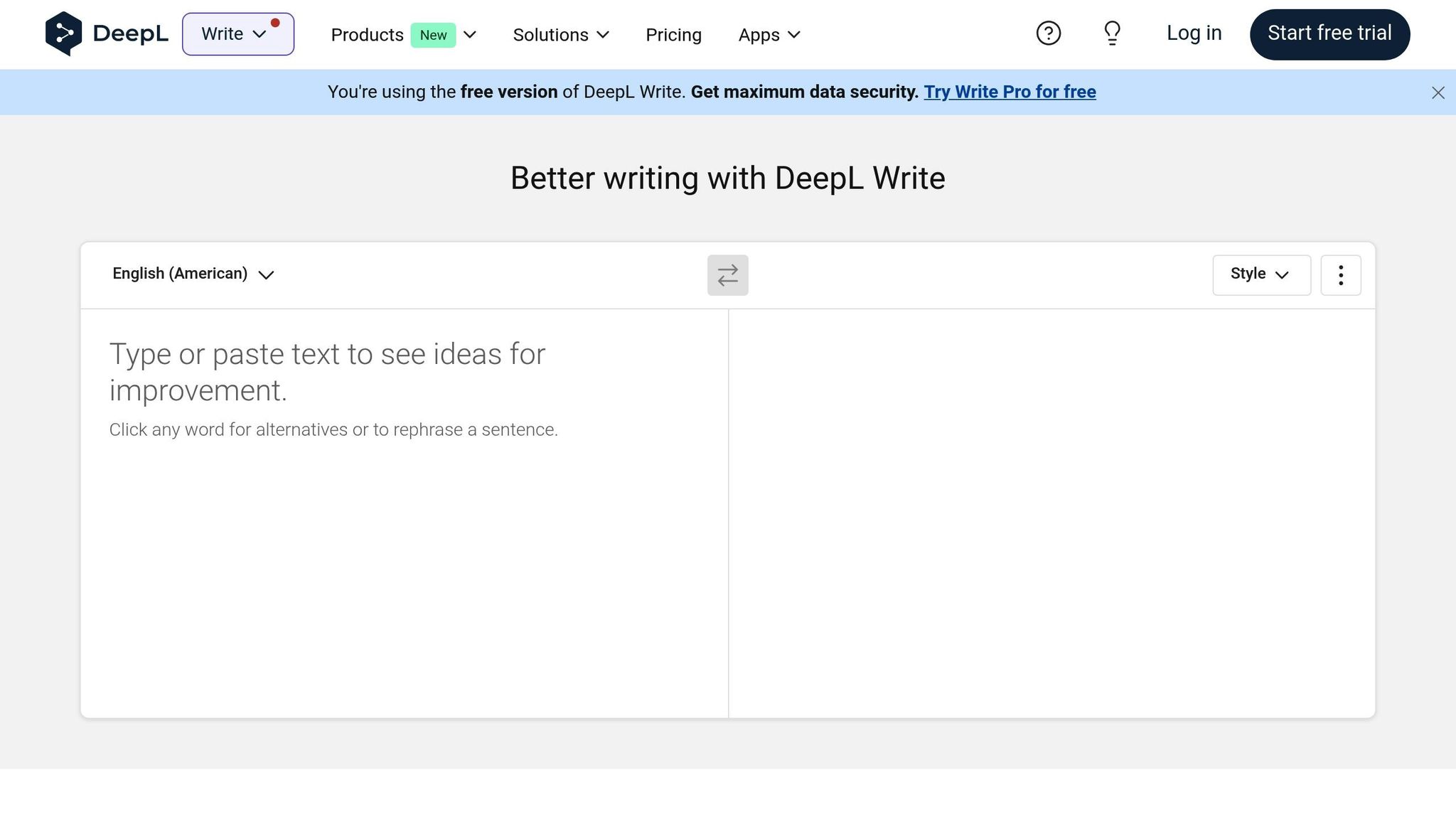
DeepL Write builds on earlier style tools by offering AI-driven translation and terminology management to enhance your writing process.
Here’s what it offers:
- Real-time rewriting: Translates and refines text between English and other languages instantly.
- Glossary integration: Tailors terminology to match specific disciplines or fields.
- Shared style guides: Helps maintain uniformity in projects with multiple authors.
- Citation and reference support: Works seamlessly with citation formats and reference management tools.
- Collaboration-friendly: Aligns terminology for team-based research efforts.
This tool ensures manuscripts are polished with precise terminology and consistent formatting, making it especially useful for collaborative writing projects.
Up next, Scholarcy helps turn your polished draft into clear, concise summaries.
8. Scholarcy
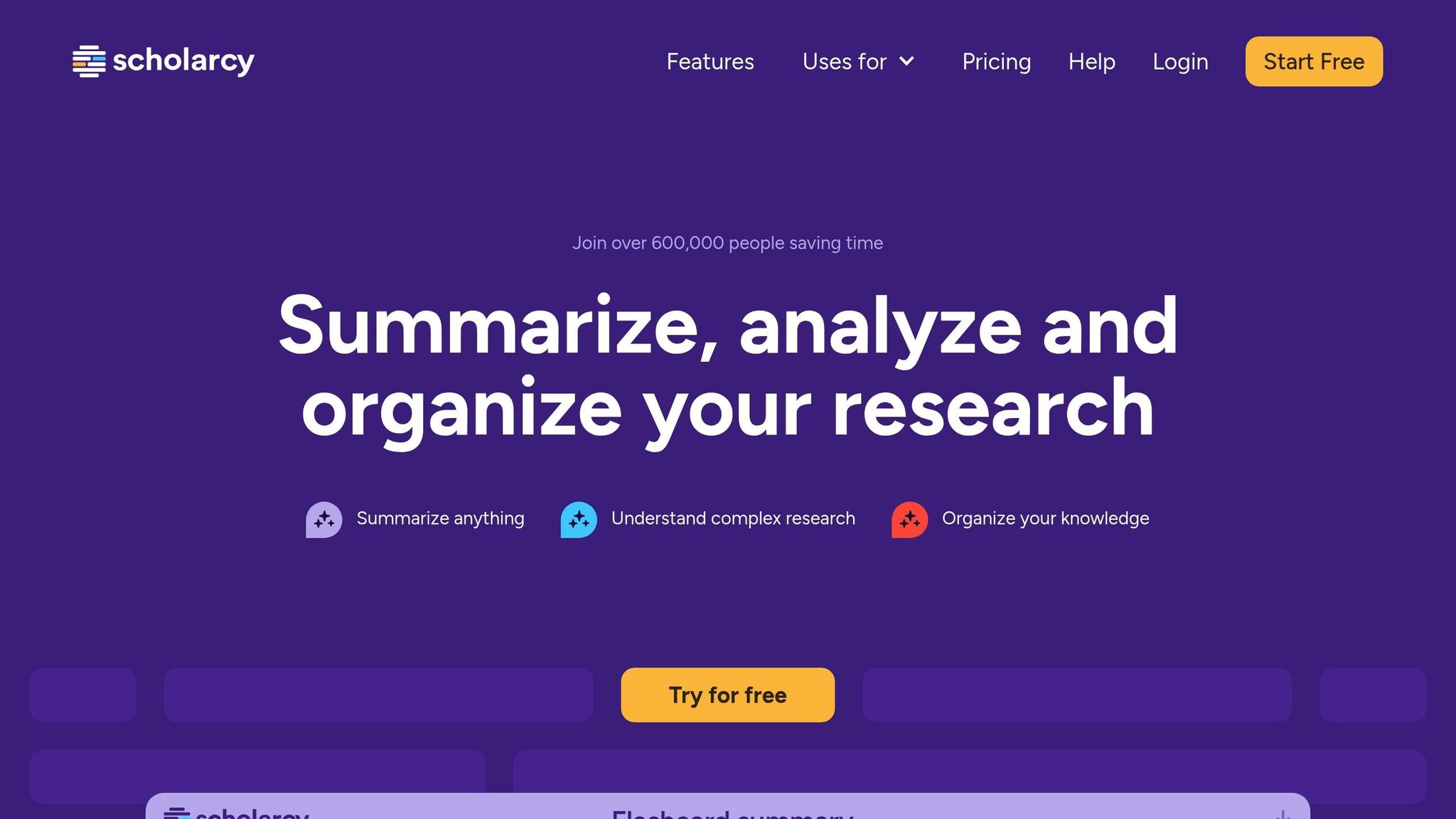
After polishing your manuscript with DeepL Write, Scholarcy helps simplify your literature review process. It takes dense academic papers and breaks them down into clear, easy-to-understand summaries.
- Automated Summaries: Turns lengthy articles into concise 1–2-page overviews.
- Key Point Extraction: Highlights hypotheses, methods, and results for faster comprehension.
- Reference Mapping: Creates visual maps to show connections between concepts across different papers.
- Flashcard Generation: Converts key highlights into study cards to aid memory.
With Scholarcy, you can spend less time deciphering papers and more time analyzing and applying the information.
Next, Quetext AI will help ensure your manuscript is both original and free from plagiarism.
9. Quetext AI
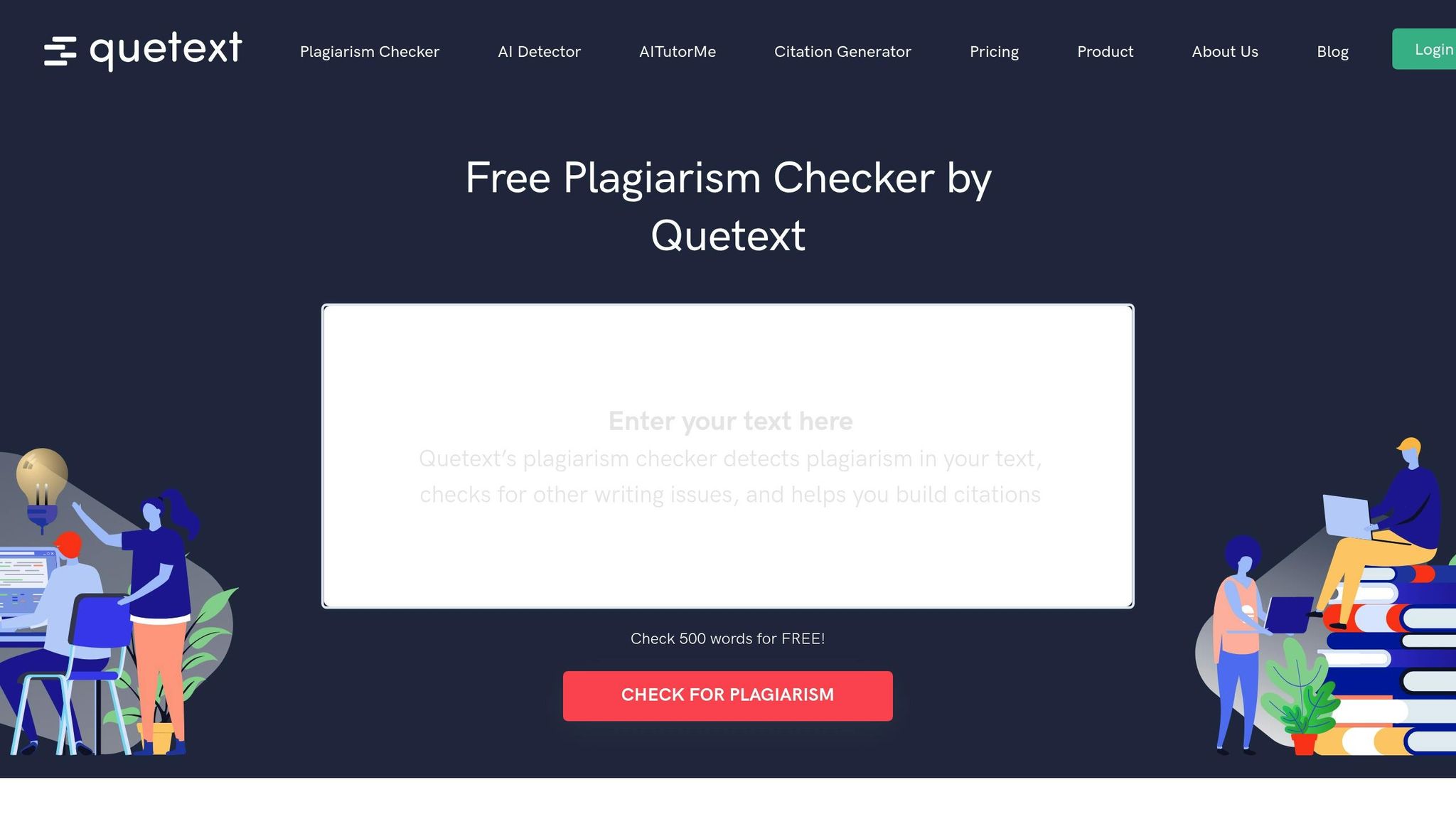
Once you've summarized your content effectively, safeguard its originality with Quetext AI. This tool ensures your work remains authentic by conducting thorough checks based on Scholarcy's summaries.
- Advanced Plagiarism Detection: Scans your text against billions of sources, providing detailed similarity analysis.
- Smart Context Analysis: Identifies problematic matches while ignoring common phrases, minimizing false positives.
- Citation Checker: Highlights missing or incorrect citations and offers suggestions for proper attribution.
- Easy Integration: Works directly with word processors and reference tools, delivering instant reports.
Up next: Discover how DataRobot for Researchers can transform your polished manuscript data into predictive models.
10. DataRobot for Researchers
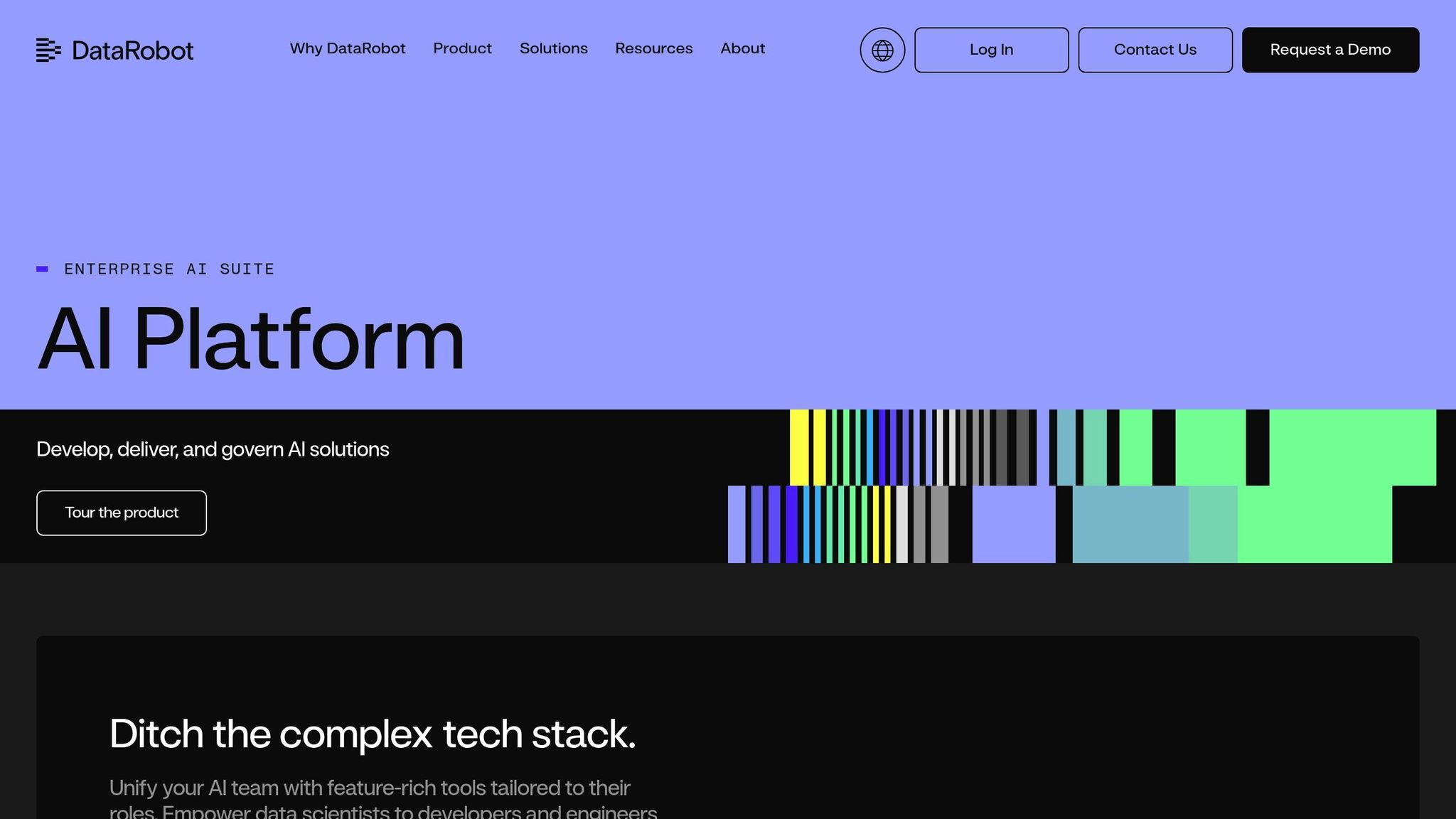
DataRobot for Researchers simplifies predictive modeling and automates machine learning processes for academic projects. It speeds up tasks like data preparation, choosing models, and interpreting results, allowing researchers to gain insights without needing extensive programming skills. It also integrates smoothly with tools like Python, R, and widely-used data sources, making it easy to fit into your current workflow.
After cleaning, citing, and summarizing your data with earlier tools, DataRobot for Researchers provides these key features:
- Automated Model Building: Quickly trains and compares multiple algorithms in just minutes.
- Data Preparation & Feature Engineering: Automatically cleans data and creates effective predictors.
- Model Explainability: Offers visual reports showing variable importance and key performance metrics.
- Collaboration & Deployment: Enables project sharing through interactive dashboards and works with Jupyter.
- Academic Integrations: Supports importing and exporting data from formats like CSV, SQL, and SPSS.
Features and Pricing Overview
Here's a quick look at what Yomu AI offers and its pricing plans:
Yomu AI provides a range of tools, including smart document assistance, AI-powered autocomplete, paraphrasing, summarization, citation formatting, and a powerful plagiarism checker. Pricing starts at $0/month for the Basic plan (limited to 5 documents), $19/month for the Pro plan (unlimited documents and real-time collaboration), and custom pricing for Enterprise plans with additional features and dedicated support.
Positioned as a standout tool in this category, Yomu AI streamlines the research process with its writing assistance and thorough quality checks.
Key Takeaways
- AI tools can save time and effort by speeding up writing, managing references, and analyzing data, ultimately helping researchers work more efficiently.
- Yomu AI offers an all-in-one platform for drafting, citation formatting, paraphrasing, summarizing, and checking for plagiarism.
- Tools like Zotero AI, EndNote AI, and Scite Assistant simplify reference management and citation analysis, ensuring accuracy and consistency.
- Iris.ai and Scholarcy help with literature reviews by mapping topics and creating summaries, while DataRobot automates predictive modeling without requiring coding skills.
- Human oversight remains essential to review AI-generated outputs and maintain academic standards.
